Power Query: Passing (Reference to) Excel Parameters
28 February 2018
Welcome to our Power Query blog. This week, I take a look at how to pass Excel data as a parameter in Power Query.
I am going to look at a simple scenario where I use a parameter in Power Query which is populated from a cell in my Excel workbook.
Below, I have a spreadsheet with charge data pertaining to items in my fictitious inventory:
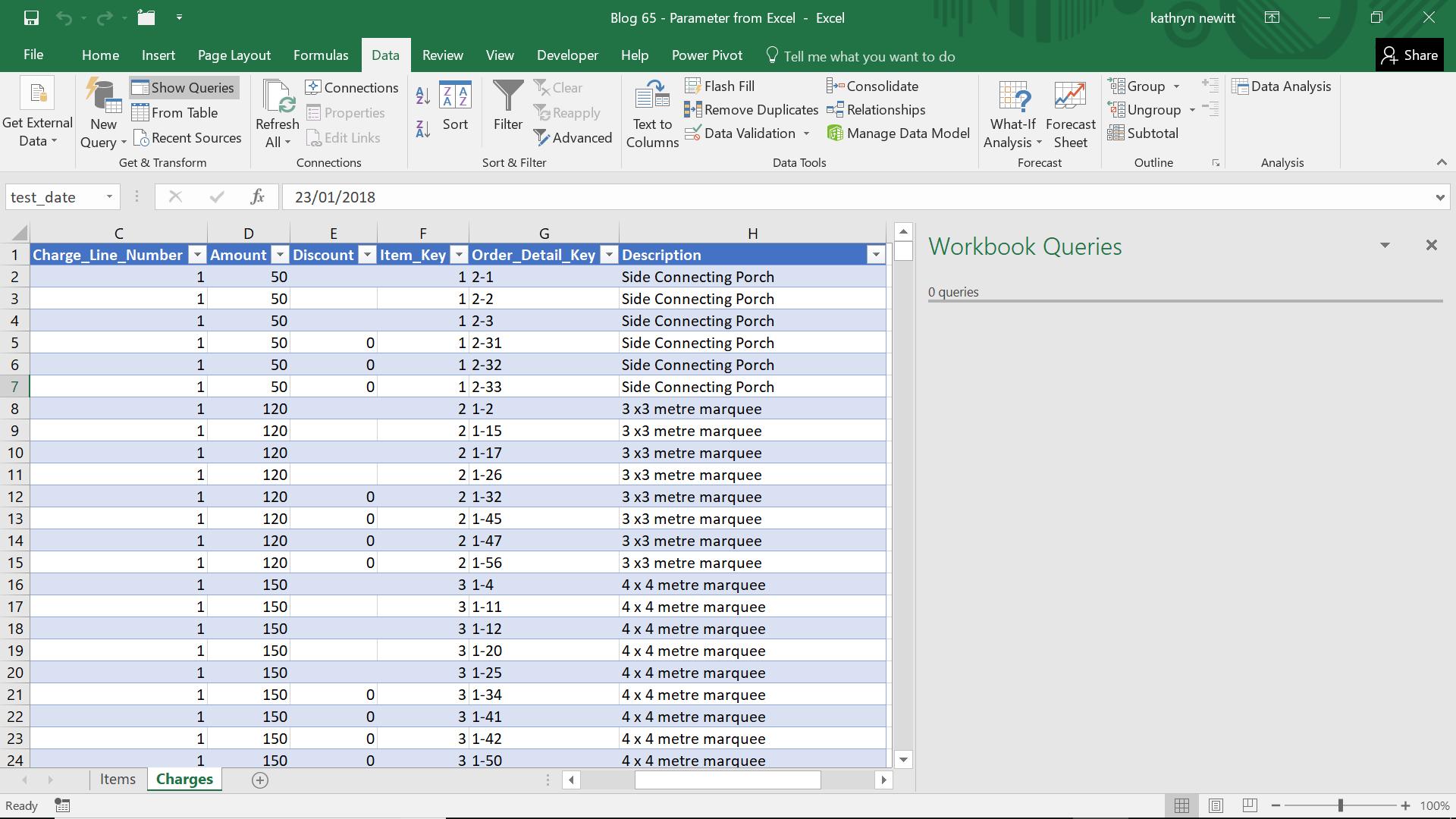
My plan is to create a query from ‘Charges’ data, and pass a parameter from the ‘Items’ sheet.
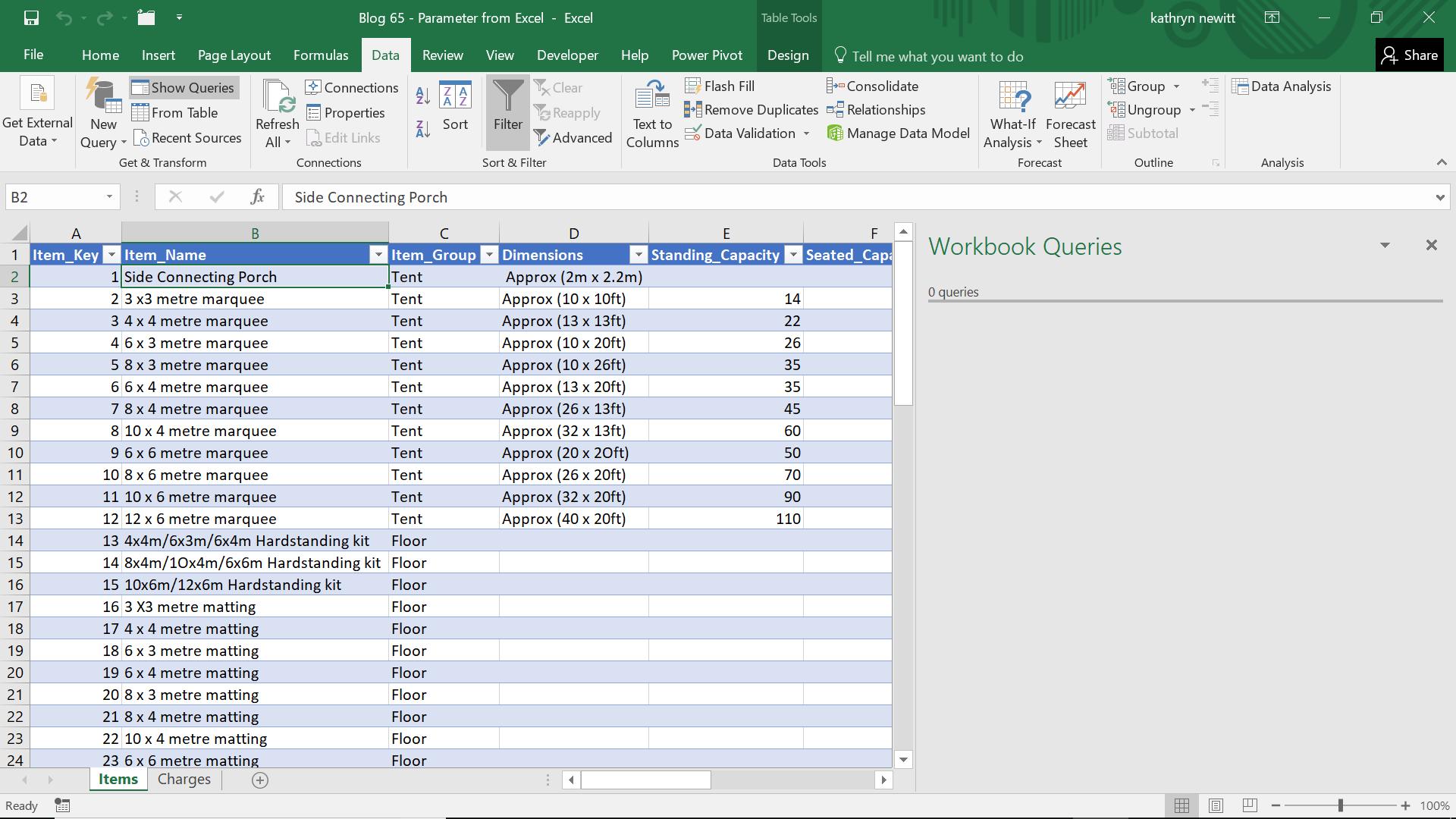
I am not claiming that this is the most efficient approach for this particular scenario, but it will serve to show the method!
I create the parameter first, so that it is ready to add to my main ‘Charges’ query. Since my cell is already in a table of items data, trying to create a new query from the ‘Data’ tab by choosing ‘From Table’ in the ‘Get and Transform’ section will assume I want the whole table. I can circumvent this issue by using the method I used in Power Query: Returning to Referencing Ranges. If I give my prospective parameter a range name, then I can locate it easily in my workbook. I name my cell ‘Parameter_Range’ and create a new blank workbook from the ‘Other sources’ option of the ‘New Query’ dropdown, viz.
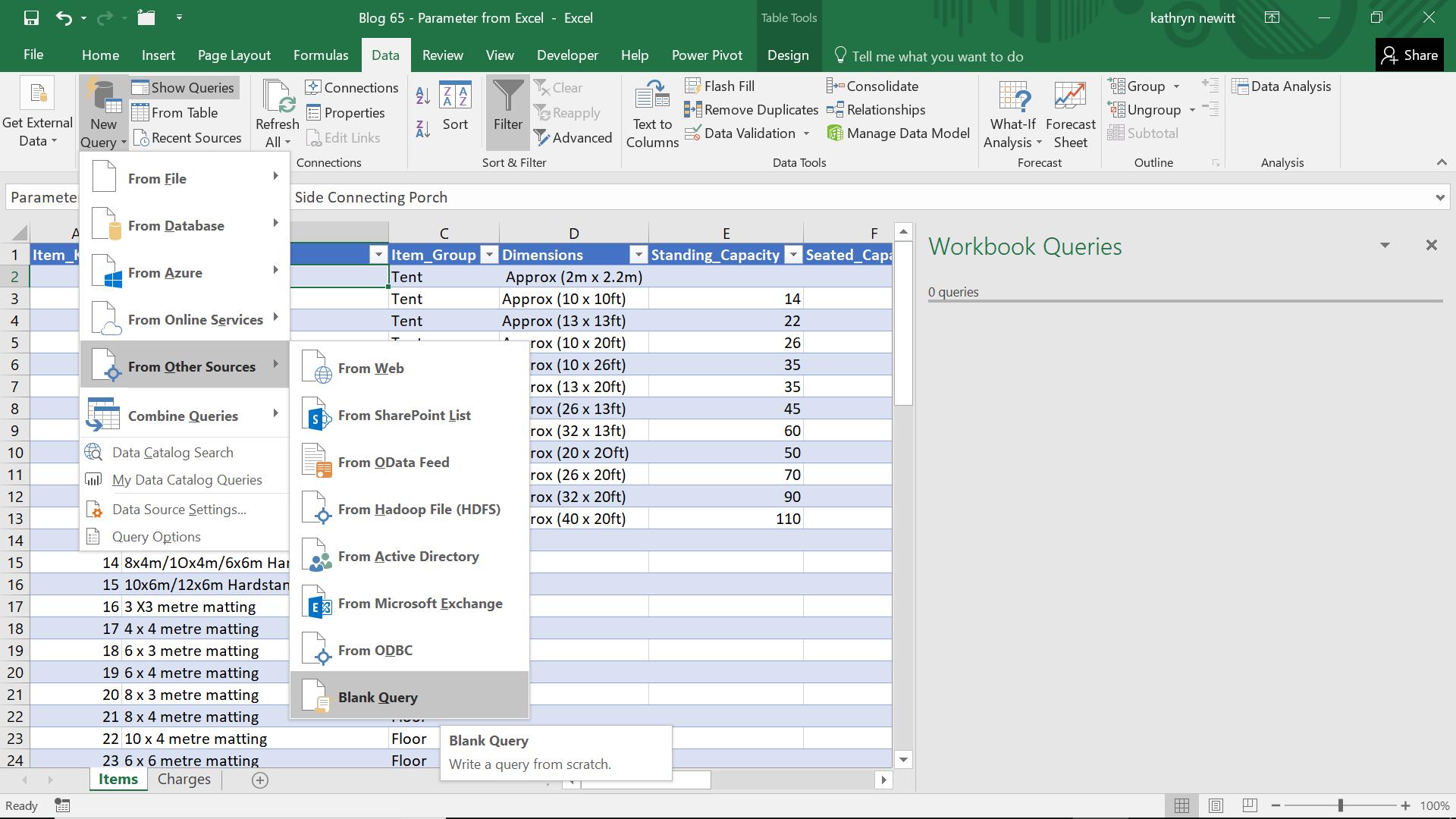
In my new blank query, I enter the following M function:
Excel.CurrentWorkbook(){[Name="Parameter_Range"]}[Content]{0}[Column1]
which will extract the value from the cell. I rename my new query ‘Item_Parameter’ and save it as a ‘Connection Only’ query.
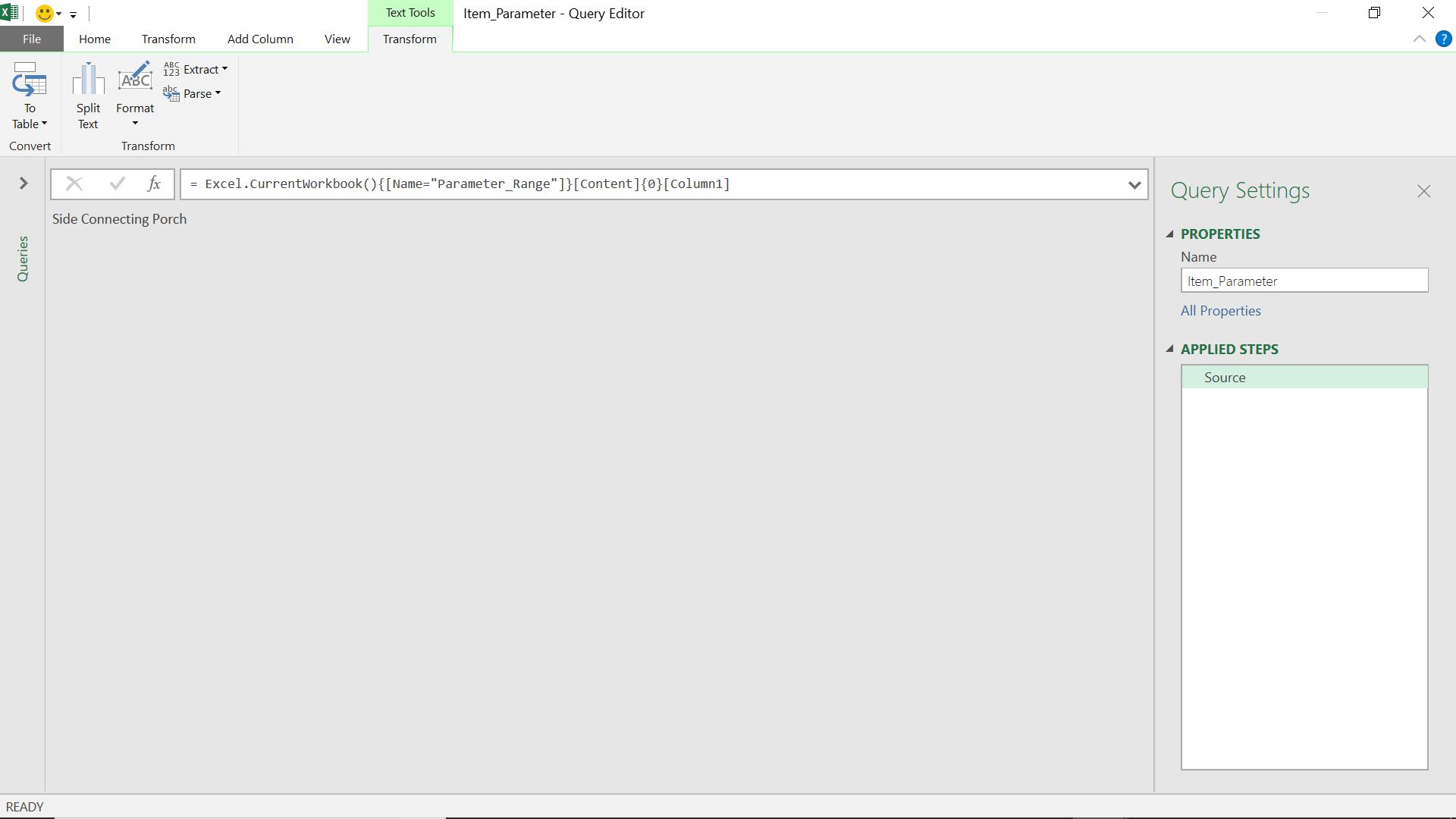
Now I need to create a query on ‘Charges’ which will select charges that match a particular item. I will do this using the GUI options available. I create a new query ‘From Table’ whilst in my ‘Charges’ sheet:
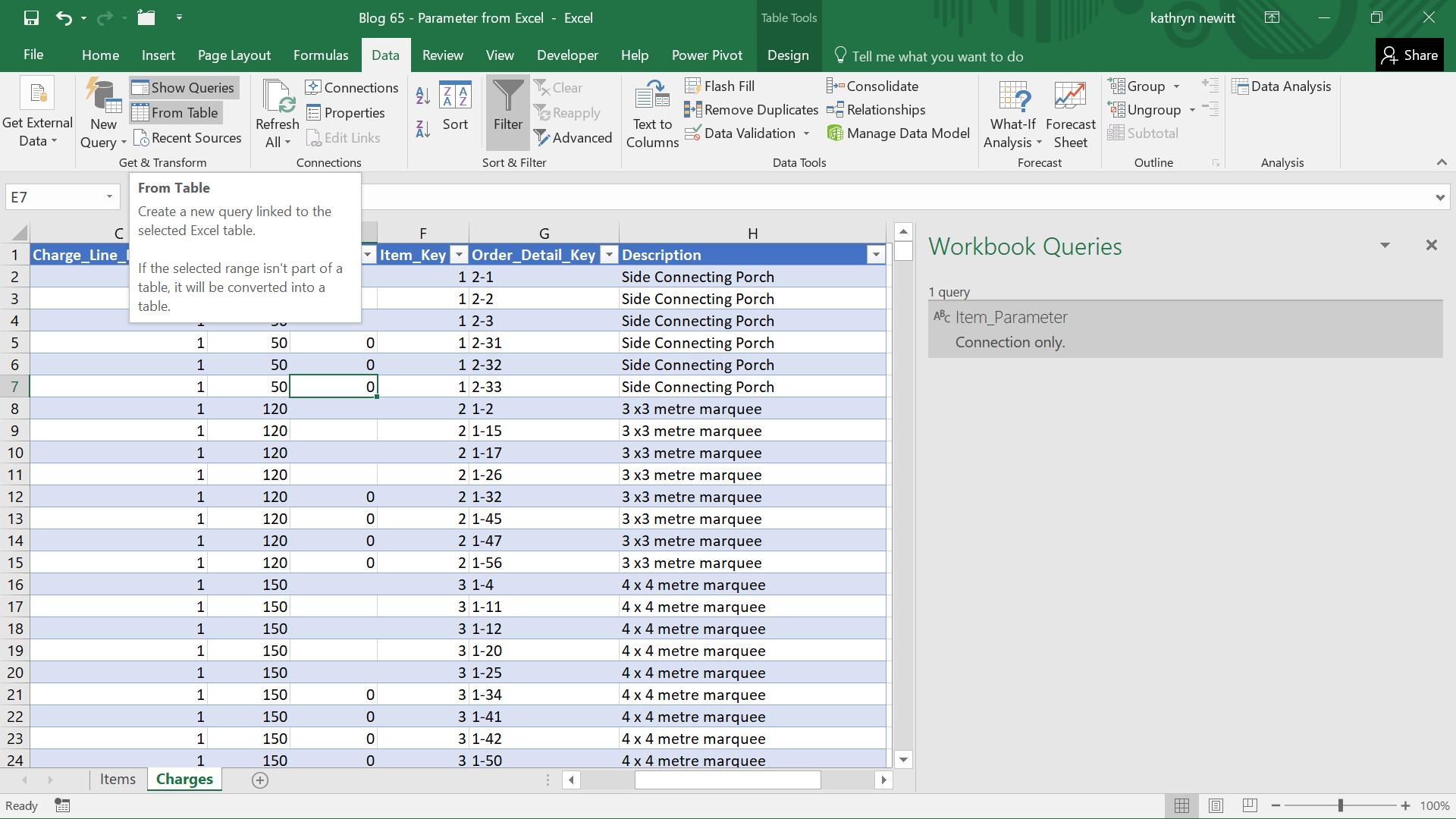
I can then choose to filter on Description:
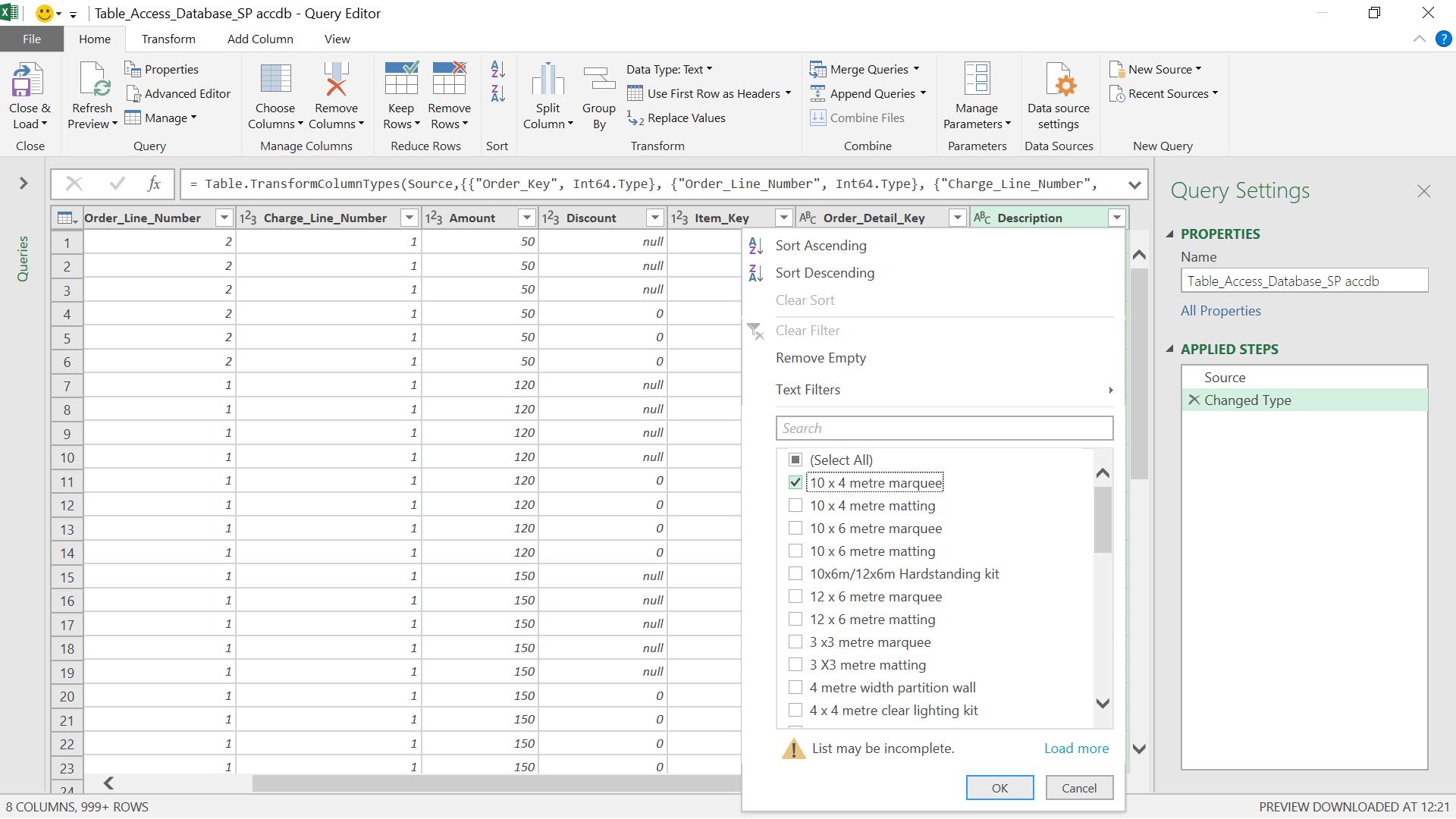
It doesn’t matter which description I pick at this stage – I am simply getting Power Query to create the step for me.
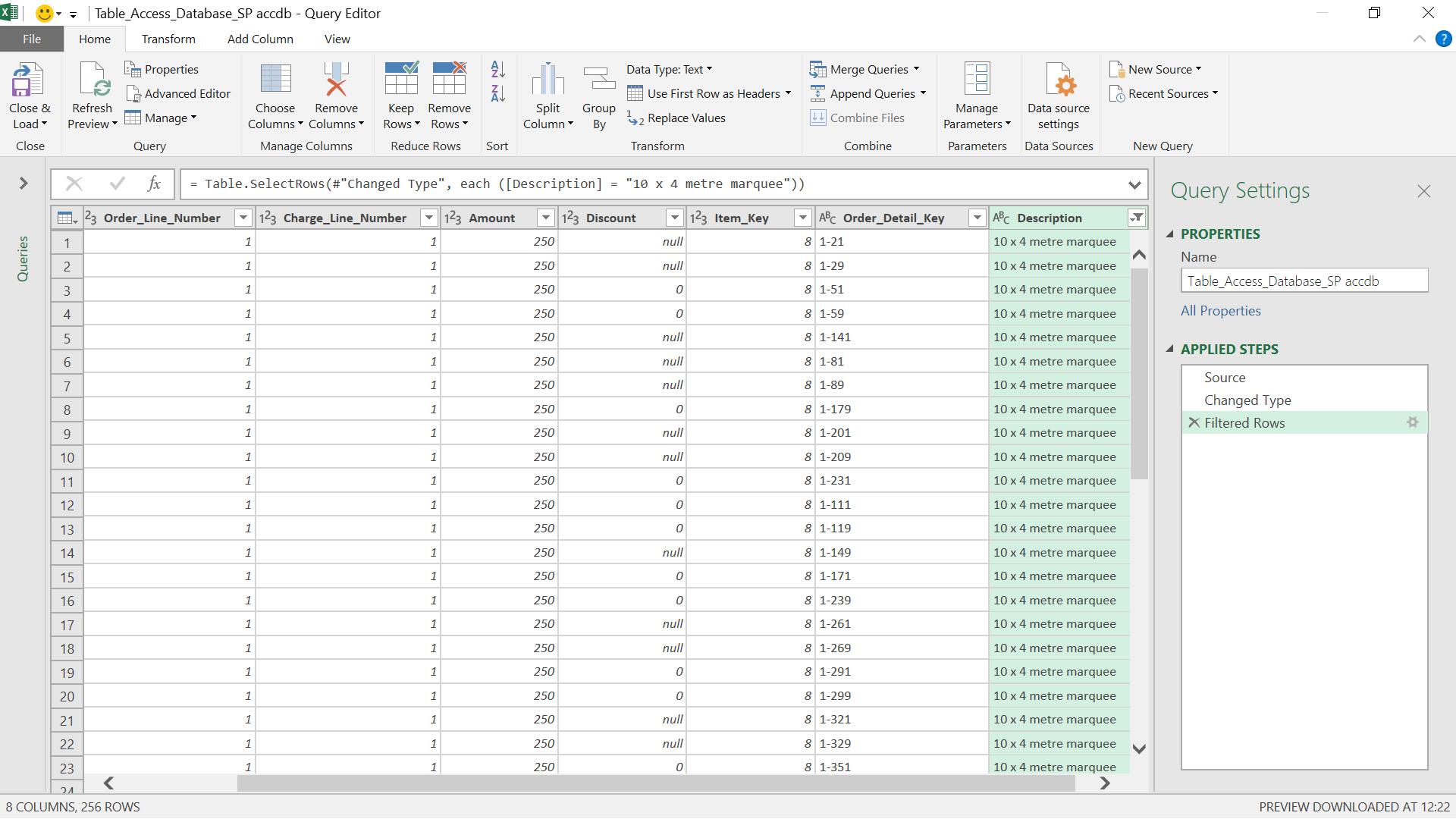
Now I have the step, instead of picking those charges that are pertaining to ’10 x 4 metre marquee’ I want to use my parameter instead. If I expand the ‘Queries’ pane to the left of the screen, I can make sure I have the correct name.
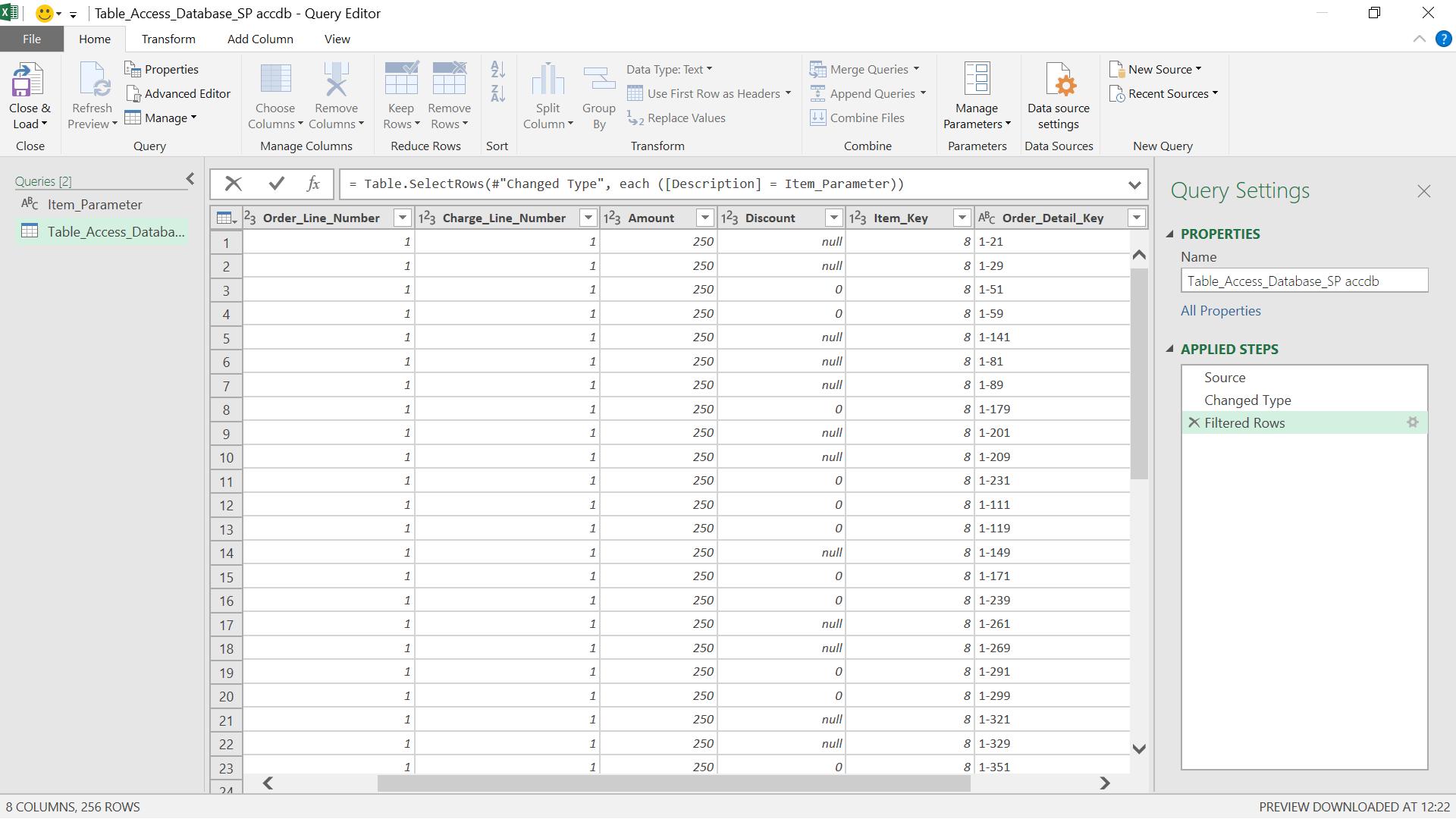
I then select the tick icon (left of the formula bar) to change the step to use my parameter.
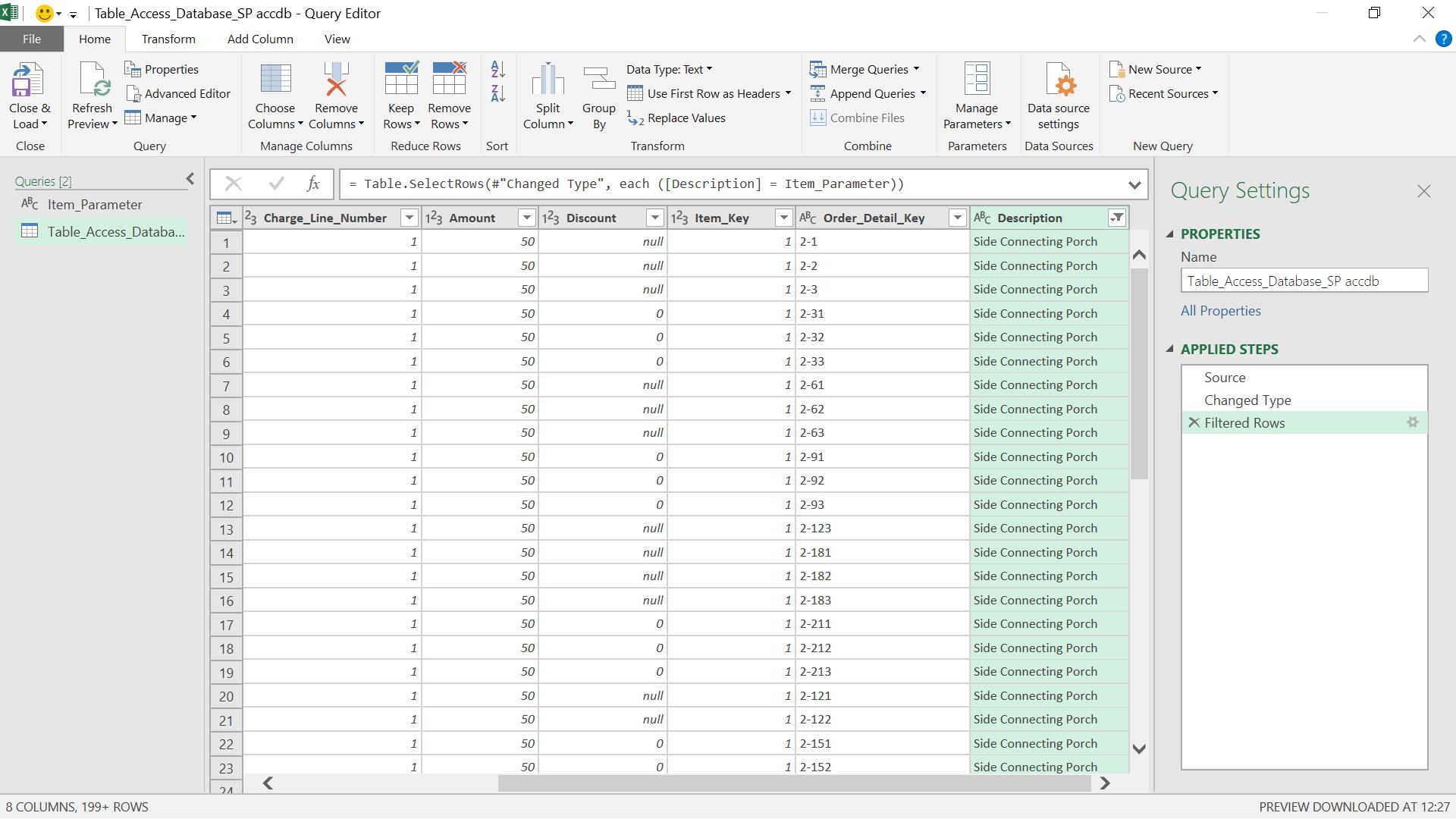
The correct data is shown. I can update the parameter (by changing the cell or editing the named range) in my Excel worksheet and refresh the query to change the data that is selected. I try this by changing ‘Item_Parameter’ to point at the next item description.
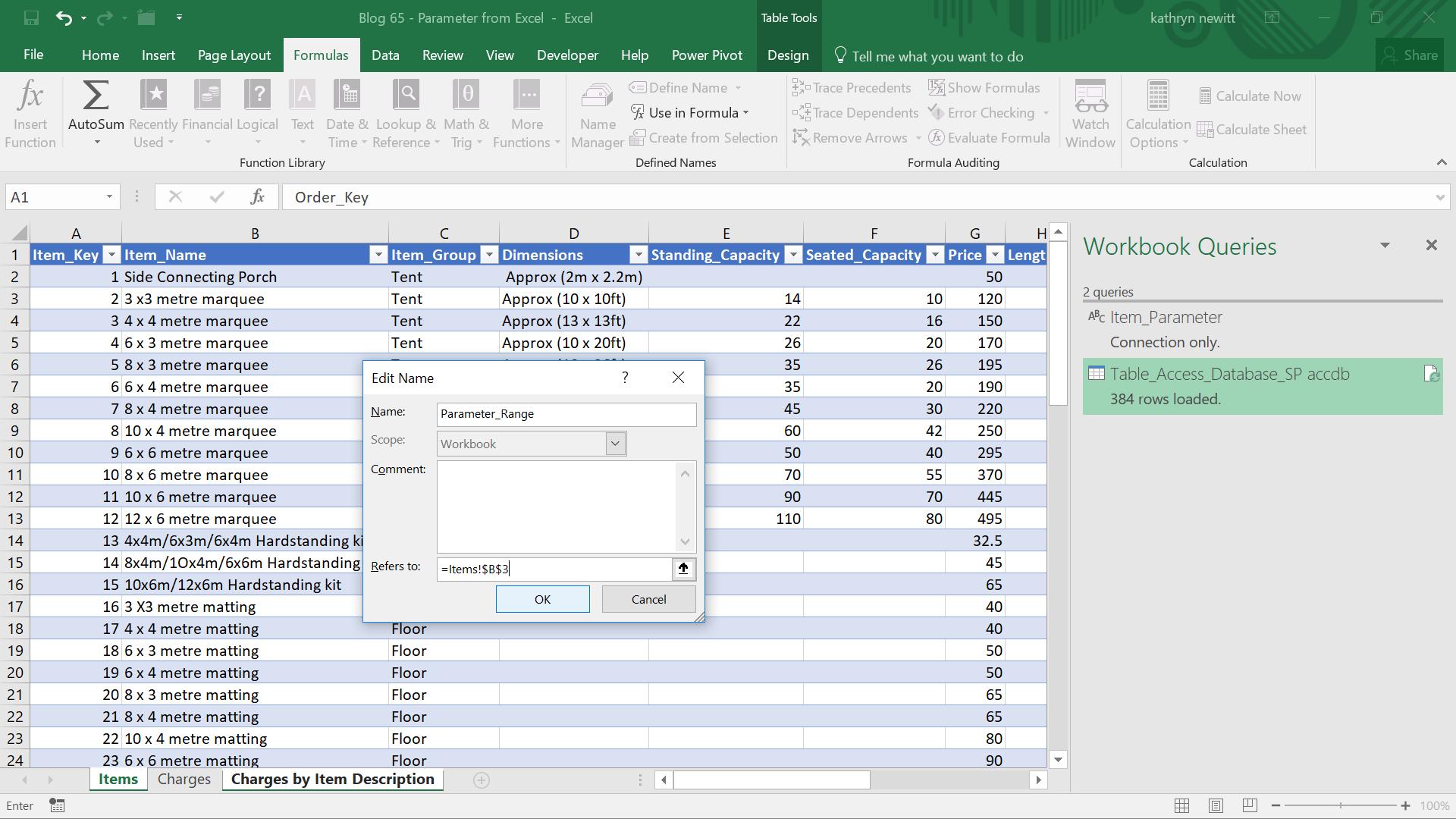
Before I refresh my query, the original data appears:
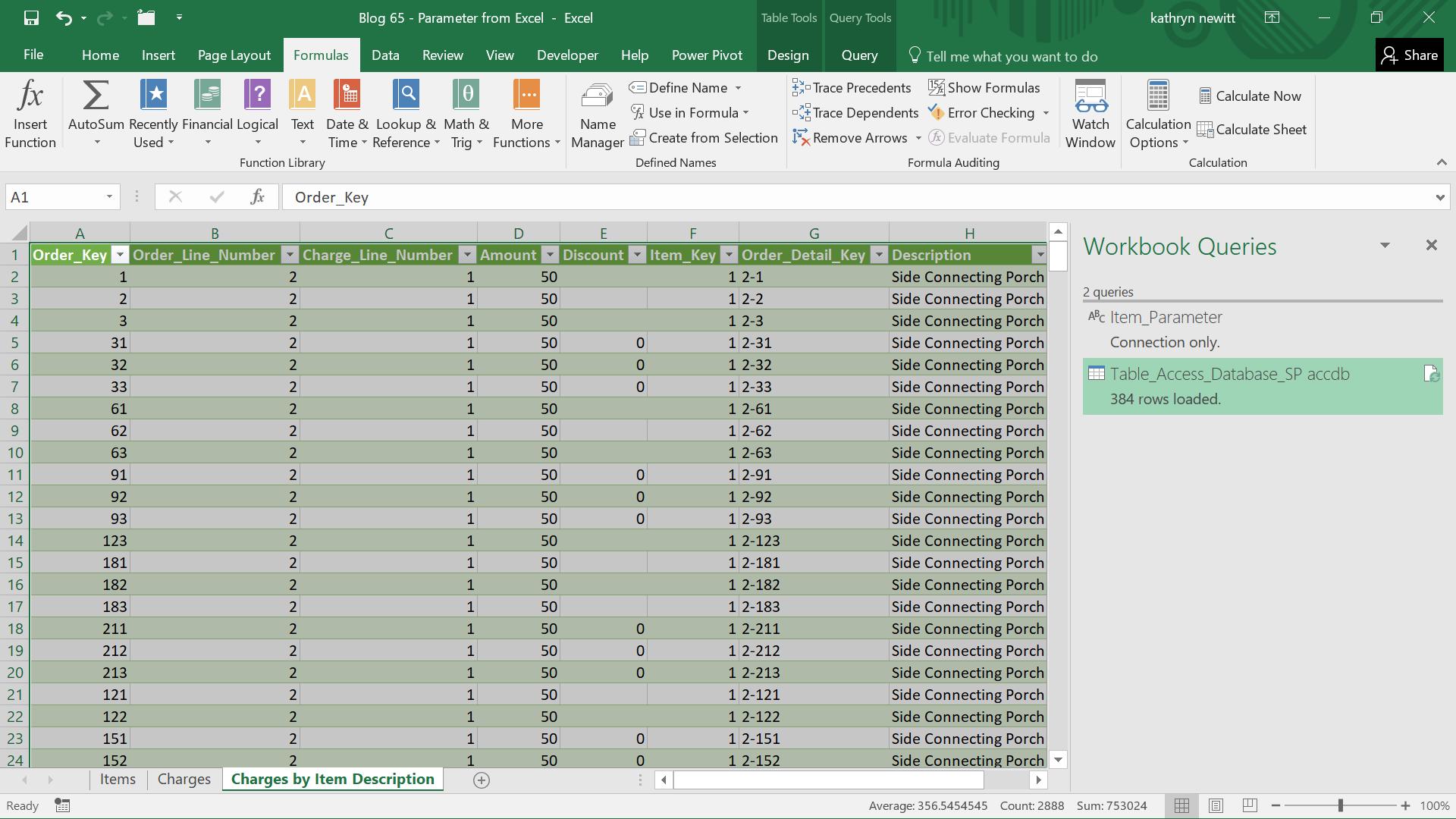
Once I refresh my query, the new parameter value is used.
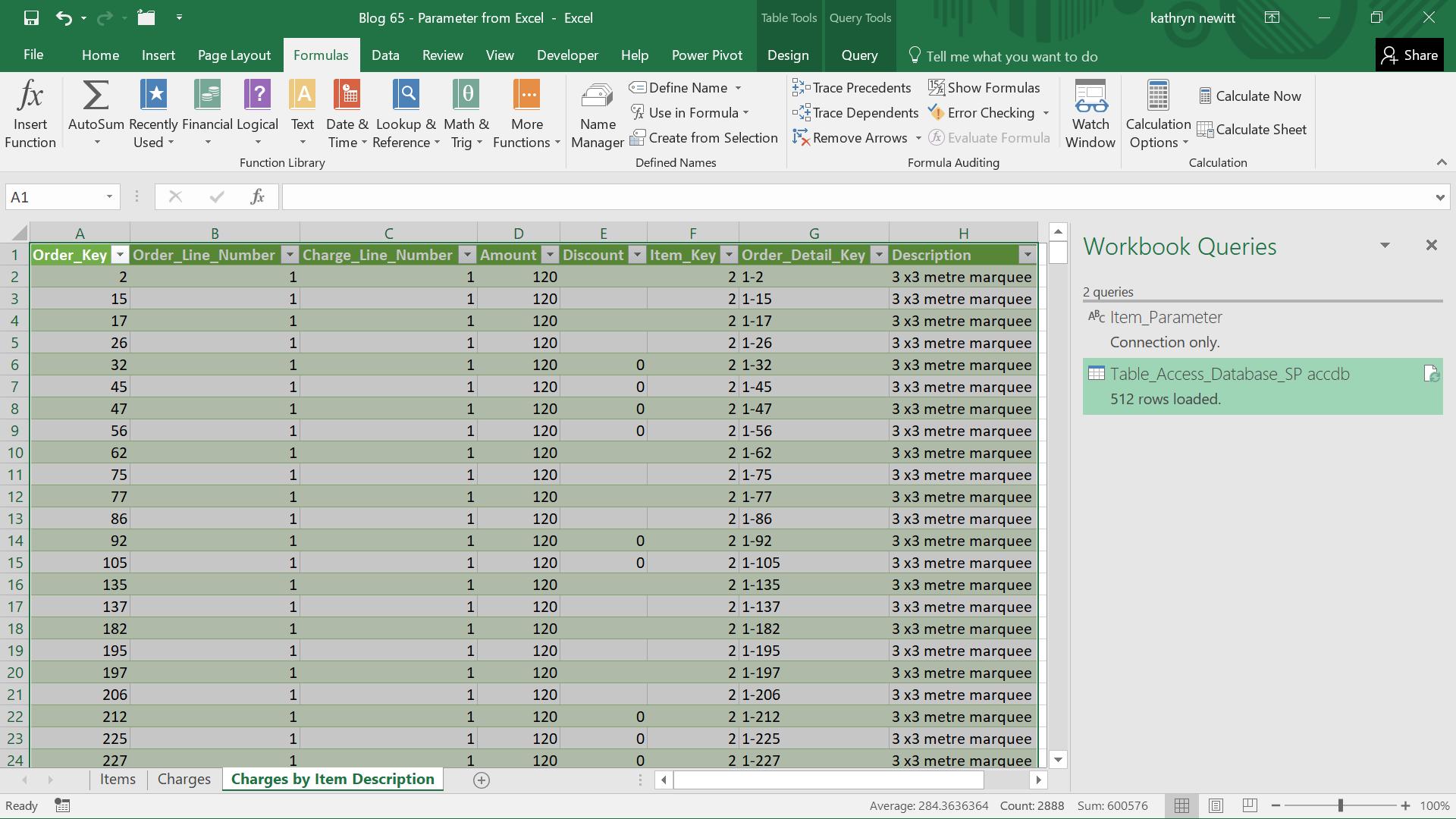
Want to read more about Power Query? A complete list of all our Power Query blogs can be found here. Come back next time for more ways to use Power Query!

